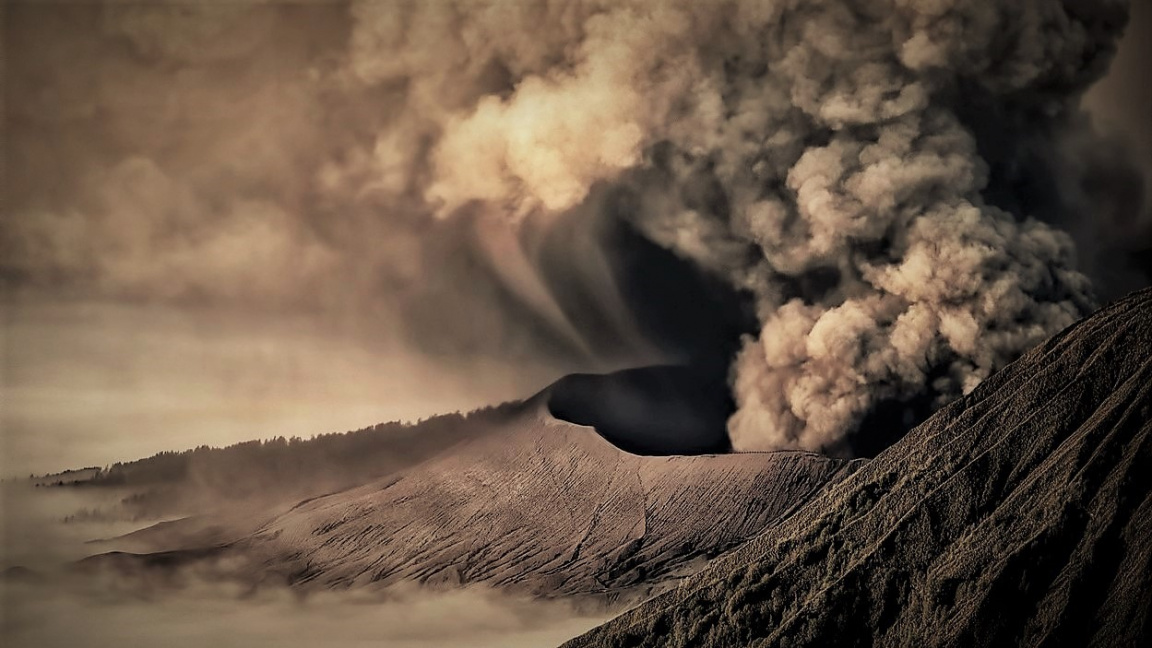The eruption of one of the supervolcanoes can have similar consequences as a nuclear war. And we cannot reliably predict this natural disaster, scientists warn in a new study.
The findings of the new study suggest that some super-volcanic eruptions may not be preceded by signals that we can detect in smaller volcanoes, such as the Cumbre Vieja volcano on the Canary Island of La Palma.
An international team of geologists from China, Taiwan, Switzerland and Indonesia has reached such a disturbing conclusion by studying the volcano Toba on the Indonesian island of Sumatra, which he describes in a scientific journal. PNAS. Experts found that the gigantic eruptions of Toby 840,000 and 75,000 years ago were not preceded by a sudden influx of magma into the volcano’s reservoir. Instead, the magma increased quietly and slowly until the eruption.
Supervulkan is a designation for a volcano that is able to erupt more than a thousand cubic kilometers of magma and volcanic ash during an eruption. This category includes, for example, Toba (Indonesia), Yellowstone and Garita (USA), Campi Flegrei (Italy) or Whakamaru and Taupo (New Zealand).
–
A volcano that almost wiped out people
Toba is a memento that shows the effects of the eruptions of some supervolcanoes. The second of these eruptions is considered to be the strongest volcano eruption in 27 million years.
The result was mass extinction. Humanity found itself on the brink of extinction during it.
2,000 cubic kilometers of lava flowed from the volcano’s esophagus and about 800 cubic kilometers of volcanic ash were ejected into the air. That’s 70,000 times more than the Cumbre Vieja volcano on La Palma so far.
The ashes shrouded the sky and caused the temperatures to drop. In addition, the explosion released billions of tons of sulfur dioxide into the atmosphere, which was converted to sulfuric acid in the clouds. Acid rains then fell on Earth.
The last great extinction of history followed. The promising human race has been decimated to 5,000 to 10,000 individuals.
What preceded the Toby eruption, the scientists found out by analyzing the chemical composition of the zircons around the volcano. Zircons are among the minerals that are formed during volcanic eruptions. The uranium contained in it decays over time in zircon to form lead.
Therefore, scientists have been able to determine the ratio between the amount of uranium and lead using mass spectrometry, which determines the mass of atoms, molecules and their parts by converting them into positive or negative ions. They then derived the age of the mineral from it.
Landstat 7 satellite image in infrared and visible light, which shows what is left of the volcano Toba – the lake of the same name with an island. The water is blue to black (depending on the depth), the vegetation is green, the bare ground is pink and the clouds are white. | source:
Profimedia
The experts thus gained both the timeline of the eruptions themselves and the accumulation of magma that preceded them.
Silence on the path
Toba Volcano itself collapsed during the eruption 75,000 years ago. Today, the lake of the same name is located in its place. It is 100 kilometers long, 30 kilometers wide, contains 240 cubic kilometers of water and in its center lies the island.
“We see that the island is gradually growing, which indicates that the volcano is still active and that magma is accumulating beneath it.” said the head of the study, Chinese geologist Ping-Ping Liu University of Geneva website.
The study estimates that there are about 320 cubic kilometers of magma below Tobou today. However, from the sheer amount of this mixture of molten rocks and gases, it is not possible to estimate when the volcano will erupt.
“Our study shows that extreme events such as a significant increase in seismic activity, an increase in the frequency of earthquakes or a sudden rise in the ground do not have to occur before a super-eruption. But with Toby, everything is going quietly below the surface, and only an analysis of the zircons suggests that the eruption will come one day, ”says Luca Caricchi of the University of Geneva, who was involved in research on Toba Volcano.
The worst version of super eruption
Where can supereruption occur? Scientists estimate that there are five to ten volcanoes on Earth capable of erupting, which would catastrophically affect civilization and the global climate. Except for Toby, for example supervulkán Yellowstone. The eruption of this volcano occurs about every 600,000 years, and the last one was 640,000 years ago.
If it were just as strong, it would be a disaster for civilization. Immediately after that, hundreds of thousands of people would die in lava and pyroclastic flows (a mixture of hot volcanic gases, fragments of magma and volcanic ash). There would be a massive fall of ashes in which millions would slowly suffocate. Almost all vegetation would be destroyed.
The ejected material would cover the atmosphere around the planet in a few weeks and reduce the intensity of the incident sunlight. This would lead to gradual cooling and dimming.
Air traffic would stop working due to fly ash. Agricultural yields would fall several times and what could be grown would be decimated by acid rain.
– .


